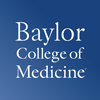Publications
Export 466 results:
Author Title [ Year ]
] Filters: First Letter Of Last Name is Z [Clear All Filters]
A retrospective analysis of the prevalence of imprinting disorders in Estonia from 1998 to 2016. Eur J Hum Genet 27, 1649-1658 (2019).
Spatially clustering de novo variants in CYFIP2, encoding the cytoplasmic FMRP interacting protein 2, cause intellectual disability and seizures. Eur J Hum Genet 27, 747-759 (2019).
TBX6 compound inheritance leads to congenital vertebral malformations in humans and mice. Hum Mol Genet 28, 539-547 (2019).
TBX6 compound inheritance leads to congenital vertebral malformations in humans and mice. Hum Mol Genet 28, 539-547 (2019).
TBX6 compound inheritance leads to congenital vertebral malformations in humans and mice. Hum Mol Genet 28, 539-547 (2019).
TBX6 compound inheritance leads to congenital vertebral malformations in humans and mice. Hum Mol Genet 28, 539-547 (2019).
TBX6 compound inheritance leads to congenital vertebral malformations in humans and mice. Hum Mol Genet 28, 539-547 (2019).
TBX6 compound inheritance leads to congenital vertebral malformations in humans and mice. Hum Mol Genet 28, 539-547 (2019).
TBX6-associated congenital scoliosis (TACS) as a clinically distinguishable subtype of congenital scoliosis: further evidence supporting the compound inheritance and TBX6 gene dosage model. Genet Med 21, 1548-1558 (2019).
TBX6-associated congenital scoliosis (TACS) as a clinically distinguishable subtype of congenital scoliosis: further evidence supporting the compound inheritance and TBX6 gene dosage model. Genet Med 21, 1548-1558 (2019).
TBX6-associated congenital scoliosis (TACS) as a clinically distinguishable subtype of congenital scoliosis: further evidence supporting the compound inheritance and TBX6 gene dosage model. Genet Med 21, 1548-1558 (2019).
TBX6-associated congenital scoliosis (TACS) as a clinically distinguishable subtype of congenital scoliosis: further evidence supporting the compound inheritance and TBX6 gene dosage model. Genet Med 21, 1548-1558 (2019).
TBX6-associated congenital scoliosis (TACS) as a clinically distinguishable subtype of congenital scoliosis: further evidence supporting the compound inheritance and TBX6 gene dosage model. Genet Med 21, 1548-1558 (2019).
TBX6-associated congenital scoliosis (TACS) as a clinically distinguishable subtype of congenital scoliosis: further evidence supporting the compound inheritance and TBX6 gene dosage model. Genet Med 21, 1548-1558 (2019).
TBX6-associated congenital scoliosis (TACS) as a clinically distinguishable subtype of congenital scoliosis: further evidence supporting the compound inheritance and TBX6 gene dosage model. Genet Med 21, 1548-1558 (2019).
TBX6-associated congenital scoliosis (TACS) as a clinically distinguishable subtype of congenital scoliosis: further evidence supporting the compound inheritance and TBX6 gene dosage model. Genet Med 21, 1548-1558 (2019).
TBX6-associated congenital scoliosis (TACS) as a clinically distinguishable subtype of congenital scoliosis: further evidence supporting the compound inheritance and TBX6 gene dosage model. Genet Med 21, 1548-1558 (2019).
TBX6-associated congenital scoliosis (TACS) as a clinically distinguishable subtype of congenital scoliosis: further evidence supporting the compound inheritance and TBX6 gene dosage model. Genet Med 21, 1548-1558 (2019).
TBX6-associated congenital scoliosis (TACS) as a clinically distinguishable subtype of congenital scoliosis: further evidence supporting the compound inheritance and TBX6 gene dosage model. Genet Med 21, 1548-1558 (2019).
TBX6-associated congenital scoliosis (TACS) as a clinically distinguishable subtype of congenital scoliosis: further evidence supporting the compound inheritance and TBX6 gene dosage model. Genet Med 21, 1548-1558 (2019).
Biallelic in-frame deletion in TRAPPC4 in a family with developmental delay and cerebellar atrophy. Brain 143, e83 (2020).
Biallelic loss of function variants in SYT2 cause a treatable congenital onset presynaptic myasthenic syndrome. Am J Med Genet A 182, 2272-2283 (2020).
Biallelic mutations in LAMA5 disrupts a skeletal noncanonical focal adhesion pathway and produces a distinct bent bone dysplasia. EBioMedicine 62, 103075 (2020).
Biallelic mutations in LAMA5 disrupts a skeletal noncanonical focal adhesion pathway and produces a distinct bent bone dysplasia. EBioMedicine 62, 103075 (2020).
Bi-allelic Variations of SMO in Humans Cause a Broad Spectrum of Developmental Anomalies Due to Abnormal Hedgehog Signaling. Am J Hum Genet 106, 779-792 (2020).
Characterization of the Robinow syndrome skeletal phenotype, bone micro-architecture, and genotype-phenotype correlations with the osteosclerotic form. Am J Med Genet A 182, 2632-2640 (2020).
CNVs cause autosomal recessive genetic diseases with or without involvement of SNV/indels. Genet Med 22, 1633-1641 (2020).
Congenital diaphragmatic hernia as a prominent feature of a SPECC1L-related syndrome. Am J Med Genet A 182, 2919-2925 (2020).
Cytoplasmic "ciliary inclusions" in isolation are not sufficient for the diagnosis of primary ciliary dyskinesia. Pediatr Pulmonol 55, 130-135 (2020).
De novo and inherited variants in ZNF292 underlie a neurodevelopmental disorder with features of autism spectrum disorder. Genet Med 22, 538-546 (2020).
De novo and inherited variants in ZNF292 underlie a neurodevelopmental disorder with features of autism spectrum disorder. Genet Med 22, 538-546 (2020).
De novo and inherited variants in ZNF292 underlie a neurodevelopmental disorder with features of autism spectrum disorder. Genet Med 22, 538-546 (2020).
Defective glycosylation and multisystem abnormalities characterize the primary immunodeficiency XMEN disease. J Clin Invest 130, 507-522 (2020).
Defective glycosylation and multisystem abnormalities characterize the primary immunodeficiency XMEN disease. J Clin Invest 130, 507-522 (2020).
Deficiencies in vesicular transport mediated by TRAPPC4 are associated with severe syndromic intellectual disability. Brain 143, 112-130 (2020).
Delineation of a Human Mendelian Disorder of the DNA Demethylation Machinery: TET3 Deficiency. Am J Hum Genet 106, 234-245 (2020).
Distinct effects on mRNA export factor GANP underlie neurological disease phenotypes and alter gene expression depending on intron content. Hum Mol Genet 29, 1426-1439 (2020).
Distinct effects on mRNA export factor GANP underlie neurological disease phenotypes and alter gene expression depending on intron content. Hum Mol Genet 29, 1426-1439 (2020).
Epilepsy subtype-specific copy number burden observed in a genome-wide study of 17 458 subjects. Brain 143, 2106-2118 (2020).
Exome sequencing implicates genetic disruption of prenatal neuro-gliogenesis in sporadic congenital hydrocephalus. Nat Med 26, 1754-1765 (2020).
Exome Sequencing Implicates Impaired GABA Signaling and Neuronal Ion Transport in Trigeminal Neuralgia. iScience 23, 101552 (2020).





